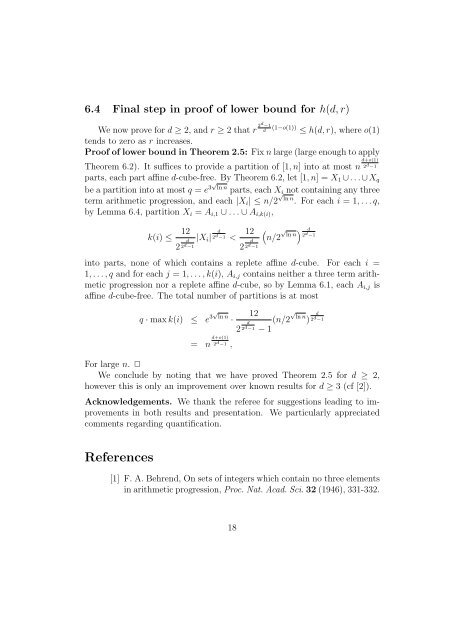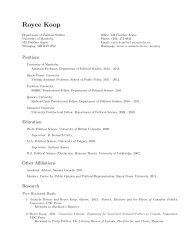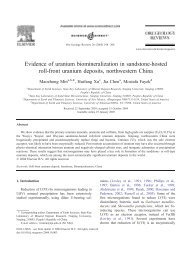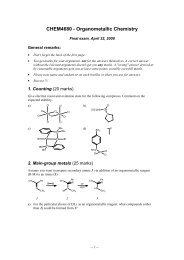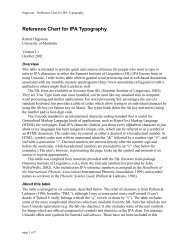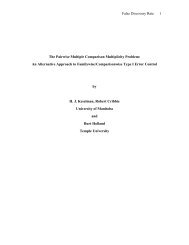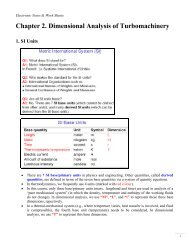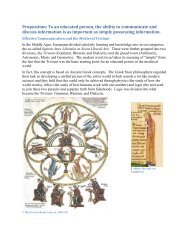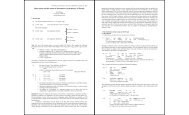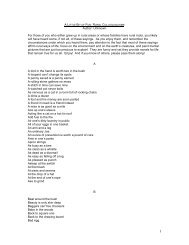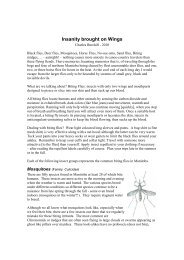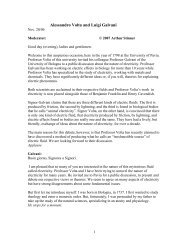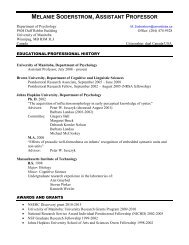Extremal problems for affine cubes of integers - University of Manitoba
Extremal problems for affine cubes of integers - University of Manitoba
Extremal problems for affine cubes of integers - University of Manitoba
Create successful ePaper yourself
Turn your PDF publications into a flip-book with our unique Google optimized e-Paper software.
6.4 Final step in pro<strong>of</strong> <strong>of</strong> lower bound <strong>for</strong> h(d, r)<br />
We now prove <strong>for</strong> d ≥ 2, and r ≥ 2 that r 2d−1 (1−o(1)) d ≤ h(d, r), where o(1)<br />
tends to zero as r increases.<br />
Pro<strong>of</strong> <strong>of</strong> lower bound in Theorem 2.5: Fix n large (large enough to apply<br />
Theorem 6.2). It suffices to provide a partition <strong>of</strong> [1, n] into at most n d+o(1)<br />
2d−1 parts, each part <strong>affine</strong> d-cube-free. By Theorem 6.2, let [1, n] = X1 ∪ . . . ∪ Xq<br />
be a partition into at most q = e3√ln n parts, each Xi not containing any three<br />
term arithmetic progression, and each |Xi| ≤ n/2 √ ln n . For each i = 1, . . . q,<br />
by Lemma 6.4, partition Xi = Ai,1 ∪ . . . ∪ Ai,k(i),<br />
k(i) ≤ 12<br />
2 d<br />
2 d −1<br />
|Xi|<br />
d<br />
2d−1 < 12<br />
2 d<br />
2 d −1<br />
<br />
n/2 √ ln n d<br />
2 d −1<br />
into parts, none <strong>of</strong> which contains a replete <strong>affine</strong> d-cube. For each i =<br />
1, . . . , q and <strong>for</strong> each j = 1, . . . , k(i), Ai,j contains neither a three term arithmetic<br />
progression nor a replete <strong>affine</strong> d-cube, so by Lemma 6.1, each Ai,j is<br />
<strong>affine</strong> d-cube-free. The total number <strong>of</strong> partitions is at most<br />
q · max k(i) ≤ e 3√ ln n ·<br />
= n d+o(1)<br />
2 d −1 ,<br />
12<br />
2 d<br />
2d (n/2<br />
−1 − 1<br />
√ d<br />
ln n<br />
) 2d−1 For large n. ✷<br />
We conclude by noting that we have proved Theorem 2.5 <strong>for</strong> d ≥ 2,<br />
however this is only an improvement over known results <strong>for</strong> d ≥ 3 (cf [2]).<br />
Acknowledgements. We thank the referee <strong>for</strong> suggestions leading to improvements<br />
in both results and presentation. We particularly appreciated<br />
comments regarding quantification.<br />
References<br />
[1] F. A. Behrend, On sets <strong>of</strong> <strong>integers</strong> which contain no three elements<br />
in arithmetic progression, Proc. Nat. Acad. Sci. 32 (1946), 331-332.<br />
18


